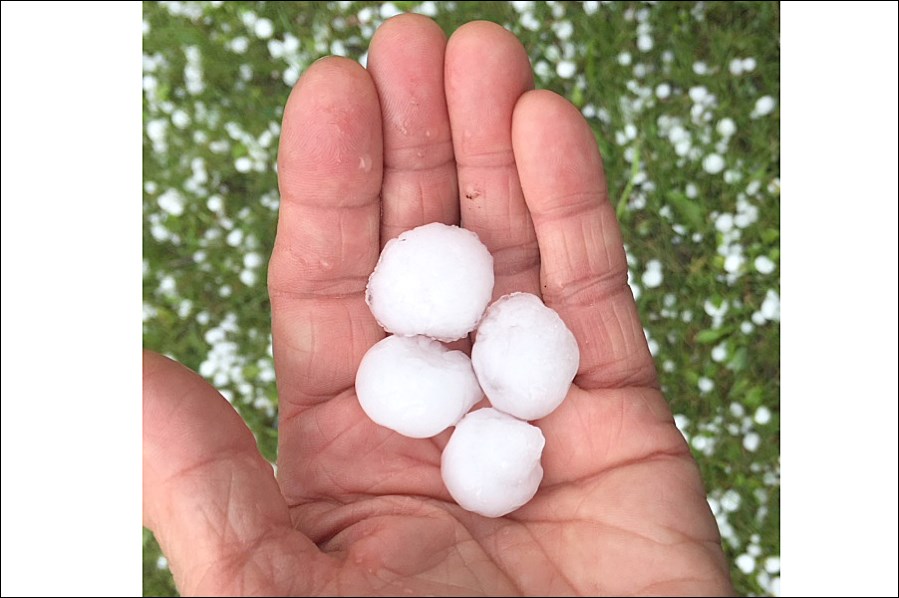What a weekend we had! A thunderstorm early Saturday morning with continuous lightning, high wind and torrential rain brought down several trees around town, damaging property. One big spruce took out a section of our fence. In the morning the sun was out and you could hear duelling chainsaws. But more was to come. In the afternoon the clouds looked ominous. The wind came up suddenly and we had a hailstorm like I had never seen before. More trees were down around town and another huge spruce came down just outside our fence. My garden was shredded.
On Sunday, I toured my perennial and vegetable garden to assess the damage and decide on a course of action. My calla lilies are close to the house and were knocked sideways. These I gently straightened and staked.
The perennial garden had some broken plants like delphiniums and lilies, and some damaged leaves. On these plants I trimmed off broken stems and shredded leaves. They will recover and delphiniums will likely put out more flower stalks. Annuals in planters lost leaves and stems. Debris and damage were cleaned up, and these, too, will recover and bloom.
The vegetable garden looked destroyed. Little tomatoes littered the ground, as well as tomato branches loaded with flowers. Beans were flattened. Chinese cabbage, lettuce, bok choi, beets and rhubarb were shredded. Even the kale was in shreds. I started by cleaning up around the plants. I cut off broken stems back to where there were leaves. I cut off shredded leaves including their leaf stems. I assumed that any leaves that were only partially destroyed could still photosynthesize, and research confirmed that premise. For those leaves I only cut off the damaged section. Climbing beans and pea vines were picked up and helped to reattach to netting with the help of a long stretch of string attached to the netting at two points, holding the bent vines close to the netting. The beans and some other veggies were helped to stand up again by gently straightening them at the base and propping the base by firming the soil.
For the tomatoes and potatoes in particular, I worried that fungal diseases could enter the wounds. A little research confirmed this. My fungicide of choice is a liquid concentrate of garden sulphur diluted and applied with a small pump sprayer. My tomatoes, peppers, peas, beans, potatoes and Saskatoons get this treatment.
Research also suggested fertilizing and making sure plants receive adequate water at all times to help them recover.
On a positive note, I cooked the damaged rhubarb to make rhubarb juice, a very refreshing beverage for hot sunny days working in the garden, or just lazing around.




